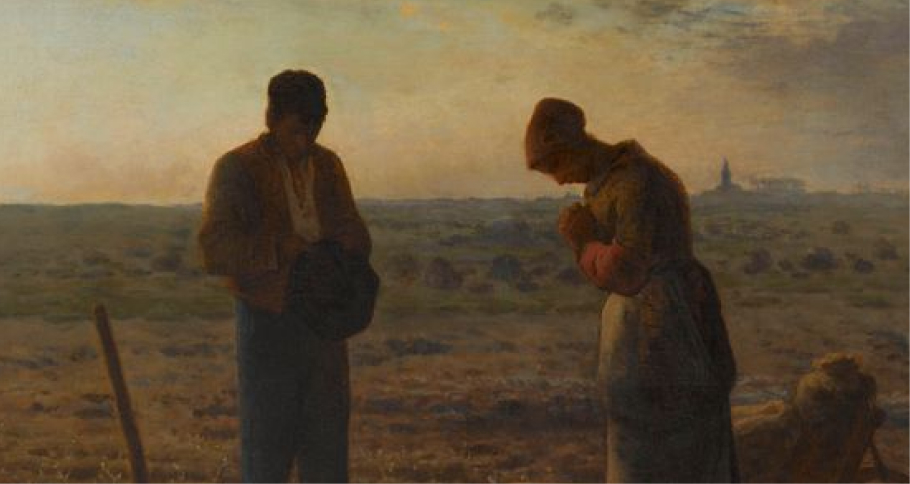Let's cut to the chase: this wonderful exhibition on Fra Angelico is a must-see. Everything that follows is simply to explain why. Fascinatingly, Fra Angelico (c.1395–1455) was not known by that name during his lifetime; it was bestowed on him posthumously by his order, the Dominicans, to honour his memory. His birth name was Guido di Piero, and he took the name Fra Giovanni on joining the Dominicans. Fra, obviously, just means brother, as all friars are called.
The astonishingly brilliant works on view are spread over two magnificent Florentine venues, the Museo di San Marco and the Palazzo Strozzi, within relatively easy walking distance of each other. A smart move would probably be to begin at San Marco, the artist’s own friary. As exhibition co-curator Stefano Casciu put it, the Museo di San Marco is now universally recognised as Fra Angelico’s museum on account of his extraordinary frescoes there, as well as his renowned San Marco Altarpiece. Casciu also observed that Fra Angelico remains to all intents and purposes the Museo’s guiding spirit.
It has been said of San Marco that it is in every respect a Medicean site, having been commissioned by Cosimo de’ Medici the Elder, and that it represents a crossroads of religious devotion, culture, and political power in 15th-century Florence. In her recent book Inventing the Renaissance, the University of Chicago’s Ada Palmer wrote about the different types of pilgrim who visit San Marco, including “art pilgrims there for Fra Angelico’s frescoes”, “local Catholic pilgrims there for the tomb of San Antoninus (who built it)” and “monasticism pilgrims there for the authentic space”.
To, in effect, edit out the fundamentally religious aspect of Fra Angelico’s work is hard to take. It reminds me of a girlfriend in Vienna who once said to me that she liked going to Sunday Mass in a particular church for the beautiful classical music to be heard there. No, my dear, one goes to Mass for the Mass. Fra Angelico was a Catholic painter; look at his life, look at his pictures. Adam Gopnik, reviewing Palmer’s book in The New Yorker, asked why the Renaissance’s greatest monuments are all Catholic affirmations of faith. But there’s no mystery here — secularists, just get over it.
Cody Delistraty wrote a 2019 essay for The Paris Review about a visit he made to San Marco, recalling some of the notable people who had found Fra Angelico to be an inspiration, such as Ruskin, Hegel, and Henry James. In Delistraty’s view, Fra Angelico’s contribution to art is perhaps the most important ever made: the transmission of emotion from the mind of the artist to the mind of the viewer.
While hardly a hidden jewel, the Museo di San Marco has managed largely to avoid the overcrowding associated with some of Florence’s other artistic locations. Part of me — no doubt selfishly — worries that this exhibition will change that. Palazzo Strozzi, the other site of the show, was recently host to a Tracey Emin exhibition, and the contrast between that one and this is profound. Yet Emin herself contributed a wonderful Crucifixion to the Royal Academy’s 2025 Summer Exhibition.
The curator of the show is Carl Brandon Strehlke, curator emeritus of the outstanding Philadelphia Museum of Art, and he previously curated a Fra Angelico exhibition at the Prado in Madrid. A brilliant work at the Palazzo is The Last Judgment. Notwithstanding the gravity of the subject, it is quite simply a painting of absolutely surpassing colour and beauty. It bears out Giorgio Vasari’s observation in his Lives of the Artists that Fra Angelico had “a rare and perfect talent” and shows that quite apart from his skill and craftsmanship, he also possessed an extraordinary imagination. Despite the fact that some of the figures depicted have been damned, the painting is uplifting and optimistic.
The exhibition catalogue explains that Angelico’s vision for this painting comes from St Augustine’s City of God. At an exhibition preview, the director general of the Fondazione Palazzo Strozzi, Arturo Galansino, quipped that one would want to be among the group on the left-hand side of the painting — the saved. In a separate point, Galansino emphasised the important contribution to the exhibition of restoration work carried out on 28 pieces on show.
I was also hugely impressed by Christ as King of Kings. As the catalogue says: “The impact of Christ’s sufferings is immediate. His gaze permits no escape.” Yet all the same, I found that despite the seriousness of the image, the figure depicted Christ’s divine inner strength. He truly is the King of Kings who is always there for us.




.jpg)




.jpg)
.jpg)
.jpg)




